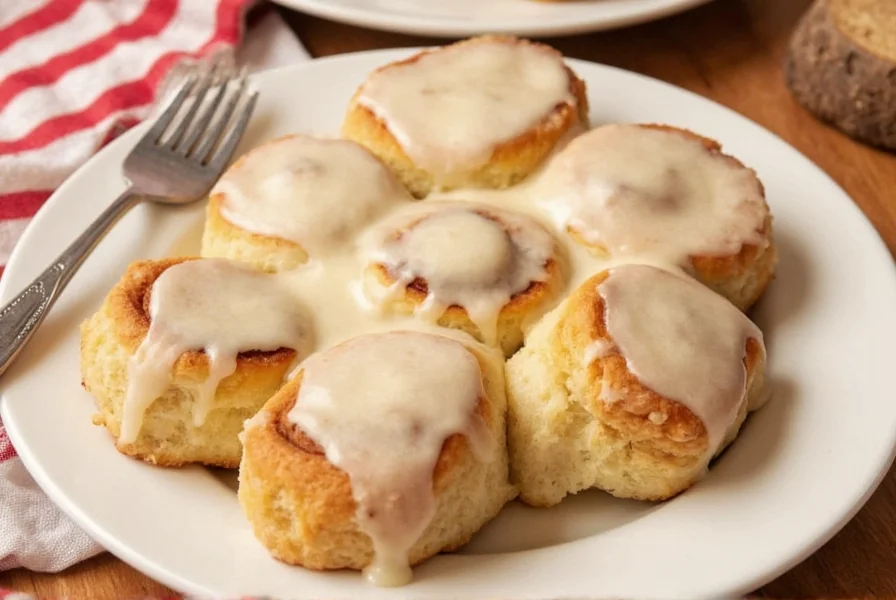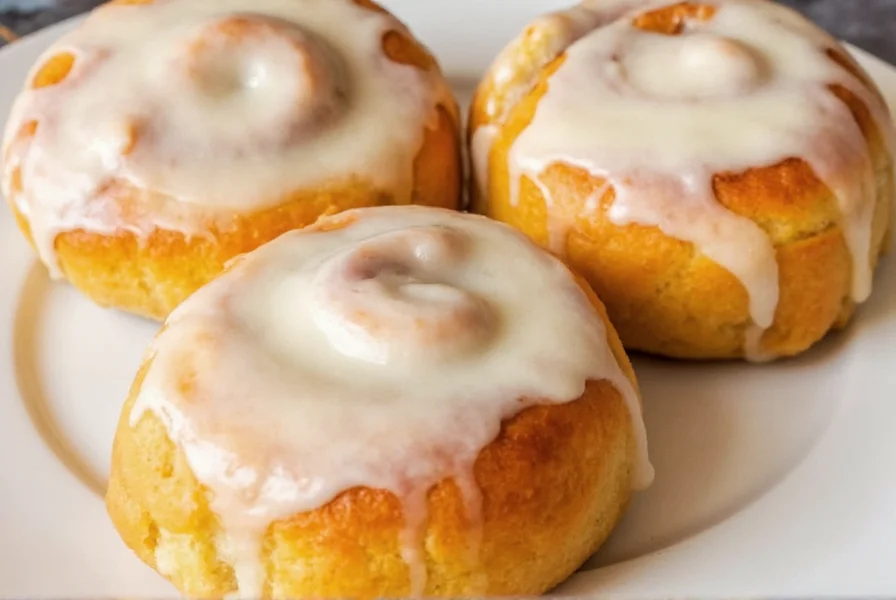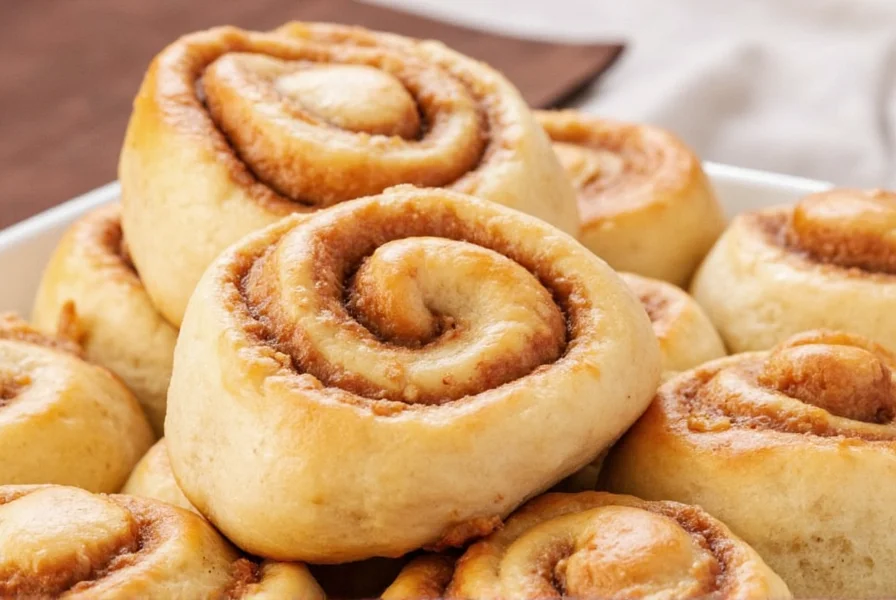Creating bakery-quality cinnamon rolls at home is achievable with the right technique and attention to detail. This comprehensive recipe delivers consistently soft, flavorful rolls with perfectly defined cinnamon swirls—no more dense or dry results. We've refined every step based on professional baking principles to ensure success whether you're a beginner or experienced baker.
Essential Ingredients for Perfect Cinnamon Rolls
The quality of your ingredients directly impacts the final texture and flavor. Use these precise measurements for consistent results:
| Ingredient | Measurement | Professional Tip |
|---|---|---|
| All-purpose flour | 4½ cups (562g) | Spoon and level method for accuracy |
| Granulated sugar | ½ cup (100g) | Divide between dough and filling |
| Unsalted butter | ⅔ cup (150g) | Softened to 65°F for proper incorporation |
| Warm whole milk | 1 cup (240ml) | 105-110°F for optimal yeast activation |
| Active dry yeast | 2¼ tsp (7g) | Fresh package for reliable rising |

Step-by-Step Baking Instructions
Dough Preparation (45 minutes)
- Activate yeast: Combine warm milk, 1 tbsp sugar, and yeast. Wait 5-10 minutes until foamy.
- Mix dough: In stand mixer, combine yeast mixture, remaining sugar, softened butter, eggs, and 2 cups flour. Mix until combined.
- Knead: Gradually add remaining flour until dough pulls away from bowl. Knead 5-7 minutes until smooth and elastic.
- First rise: Place in greased bowl, cover, and let rise at 75-80°F for 1-1.5 hours until doubled.
Filling and Shaping (25 minutes)
For the perfect cinnamon swirl filling, combine ½ cup softened butter, 1 cup brown sugar, and 2 tbsp ground cinnamon. Roll risen dough into 18x12 inch rectangle, spread filling evenly, leaving ½ inch border. Roll tightly from long side, pinch seam to seal.

Baking and Finishing (30 minutes)
- Cut roll into 12 equal pieces using dental floss for clean cuts
- Place in greased 9x13 inch pan, cover, and let rise 30-45 minutes
- Bake at 350°F for 22-25 minutes until golden brown
- Prepare icing: Beat 4 oz cream cheese, ¼ cup butter, 1 cup powdered sugar, and ½ tsp vanilla
- Drizzle warm rolls with icing immediately after baking
Troubleshooting Common Issues
Even experienced bakers encounter challenges with cinnamon rolls. Here's how to solve frequent problems:
| Issue | Probable Cause | Solution |
|---|---|---|
| Dense texture | Over-flouring or under-proofing | Measure flour correctly; allow full rising time |
| Filling leaking out | Dough too cold or filling too liquid | Ensure dough is room temperature; use proper butter consistency |
| Burnt bottoms | Oven temperature too high | Use oven thermometer; reduce temperature by 25°F |
Professional Baking Tips
- Dough temperature matters: Maintain 75-80°F during rising for optimal yeast activity
- Rolling technique: Start with even pressure and gradually increase toward the end for tight swirls
- Storage: Keep unfrosted rolls airtight for 2 days or freeze for up to 3 months
- Reheating: Warm individual rolls 10-15 seconds in microwave with damp paper towel
Popular Variations to Try
Once you've mastered the classic recipe, experiment with these delicious variations:
- Apple cinnamon rolls: Add ½ cup finely diced apples to the filling
- Cheesecake swirl: Mix 4 oz cream cheese with half the filling ingredients
- Maple pecan: Substitute maple sugar for brown sugar and add chopped pecans
- Whole wheat option: Replace 1 cup all-purpose flour with white whole wheat flour
Frequently Asked Questions
Can I prepare cinnamon rolls the night before?
Yes, you can prepare cinnamon rolls through the shaping step, then cover and refrigerate overnight. Remove from refrigerator 1-2 hours before baking to allow proper rising. This cold fermentation actually enhances flavor development while fitting into busy schedules.
Why did my cinnamon roll filling leak out during baking?
Filling leakage typically occurs when the dough temperature is too cold when placed in the oven or when the butter in the filling is too soft. Ensure your dough has completed its final rise at room temperature, and use butter that's softened but still cool to the touch (around 65°F) for the filling. Creating a tight roll with the seam properly sealed also prevents leakage.
What's the ideal baking temperature for cinnamon rolls?
The optimal baking temperature for cinnamon rolls is 350°F (175°C). This moderate heat allows the rolls to rise fully before the structure sets, creating that characteristic light, fluffy texture. Higher temperatures cause the exterior to set too quickly while the interior remains undercooked, while lower temperatures extend baking time unnecessarily and can dry out the rolls.
How can I make my cinnamon rolls extra fluffy?
For exceptionally fluffy cinnamon rolls, ensure your yeast is fresh and properly activated, measure flour accurately (don't pack it), maintain ideal dough temperature during rising (75-80°F), and don't under-knead the dough. Allowing a full second rise after shaping is crucial—rolls should nearly double in size before baking. Using bread flour instead of all-purpose can also create a slightly lighter texture due to its higher protein content.











 浙公网安备
33010002000092号
浙公网安备
33010002000092号 浙B2-20120091-4
浙B2-20120091-4